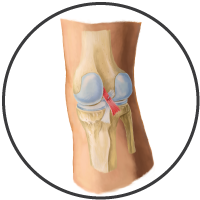Signs & Symptoms
Signs and symptoms associated with PCL Injuries include:
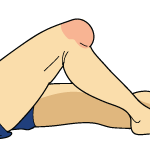
- Knee swelling and pain
- Feeling of instability in the knee
- Knee feels stiff
- Limping or difficulty walking
- Pain in back of calf
Some mild PCL Injuries can go undetected, as the symptoms associated with a PCL injury can be more subtle than with other knee injuries.
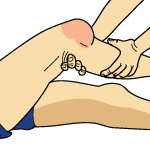
You will need to see a healthcare professional in order to receive a formal diagnosis. During the appointment, your doctor will ask you how and when the injury occurred. They will also ask you to describe the symptoms you've been experiencing. You doctor will want to examine the affected knee to check for swelling and tenderness. They may also move your leg into different positions to check your range of motion.
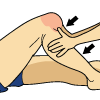
Your doctor may perform a test called the Posterior Drawer Test. Your doctor will ask you to lie back, with your injured knee bent at 90°. Your doctor will push back on your shinbone to see if it sags at all. If the PCL is healthy, it will not let the shinbone go back that far. If the shinbone does sag, this is a sign of a PCL tear.
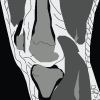
You may be sent for imaging tests, such as x-rays or an MRI, to confirm the diagnosis of a PCL Tear. Imaging tests also help rule out other injuries or conditions, such as bone fractures. If you have injured multiple structures within the knee, your doctor will want you to undergo an MRI to determine the full extent of the damage.
